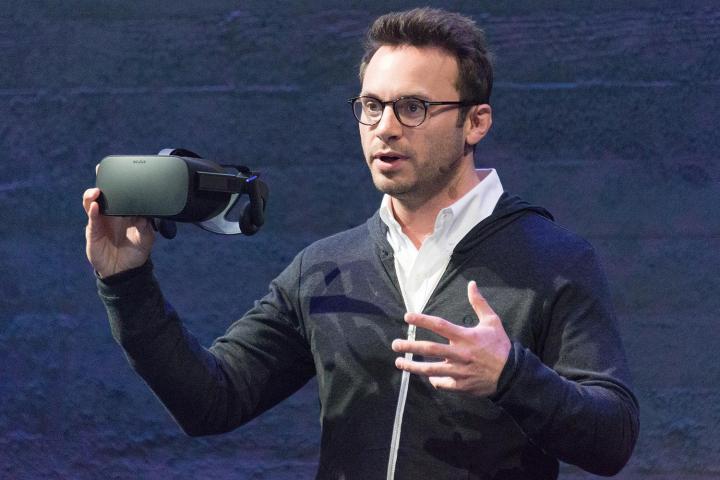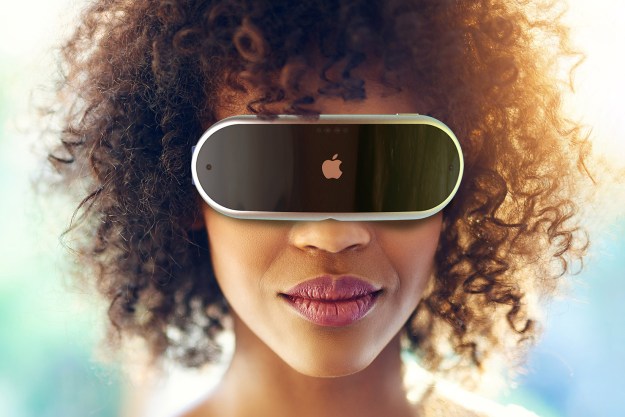
Still, much of the hype was about new virtual-reality hardware. The Oculus Rift is slated for an early 2016 release, which means consumer-ready VR is less than a year away. Our own Brad Bourque had a chance to sit down with the device and came away from it stunned. Despite months of anticipation, his expectations were exceeded.
But I remain skeptical. The consumer Rift’s release means we’re on the cusp of everyday users spending serious coin on a VR headset, and I’m not sure it’s ready despite several years of development. Here’s why.
The price
Virtual reality won’t be cheap.
While the consumer version of the Rift has been revealed, the company hasn’t provided any pricing details. All we know is that Oculus plans a price south of $400. Whether or not the price will include the recently revealed motion controllers is unknown.
Convincing the masses to spend $400 for a more immersive version of games they already enjoy will not be easy
Frankly, it doesn’t matter. While Oculus’ parent, Facebook, could afford to give the Rift away for free, that’s little more than a prayer. At the least the Rift will be a couple hundred bucks — at the most, it’ll press the very edge of its $400 goal. In either case it’ll be among the most expensive gaming peripherals on the market.
That’s not good. Time and time again gamers have refused to buy expensive peripherals, no matter how good they are. The market for racing wheels and joysticks is relatively small compared to its glory days in the late 90s. Then there’s Kinect, the infamous add-on that damaged the Xbox One’s reception when it was announced as mandatory – alongside a price tag $100 north of the PlayStation 4.
Most people don’t want to spend more money using a device they already have, and if they must spend anything at all, it should be as little as possible. Convincing the masses to spend $400 for a more immersive version of games they already enjoy will not be easy. The fact that VR’s benefits are impossible to appreciate outside a tightly controlled, in-person, hands-on experience adds to the problem.
The performance
Spending a few hundred dollars on a VR headset is only the beginning. You also need the hardware to run it.
A few entries into the VR space, like Sony’s Project Morpheus and Google’s Cardboard, side-step this issue by using relatively affordable devices (a console or a smartphone, respectively) and dealing with the resulting limitations. VR headsets for the PC, however, pursue a high level of visual fidelity. That means you’ll need an expensive video card and a fast processor.

AMD and Nvidia are using VR as an opportunity to promote extreme enthusiasts cards like the GTX 980 Ti and the AMD Fury X. Virtual reality could finally give gamers a reason to buy the most expensive card instead of a modest, mid-range model — or so they say.
They’re putting the cart before the horse. Gamers who’ve just bought a Rift won’t gleefully spend hundreds more on a new video card. Savvy players will realize the full costs of investing in VR and choose to keep their money in their wallets.
Unfortunate as that seems, it’s the best-case scenario. What should be feared is the mass of gamers who think they understand hardware requirements, but don’t. PC gamers constantly exaggerate the capabilities of their rigs. Comparing computers online always adds 10 or 15 frames per second to the performance of every system involved.
That’s OK if you’re using a monitor. If you think you’re managing a solid 60 frames per second, but are actually seeing 45, it’s not the end of the world. But the increased immersion of virtual reality makes every stutter and hiccup more noticeable. A lot of people with barely adequate hardware will buy a Rift, and they won’t be happy. This, too, is a traditional problem of complex peripherals — they rarely work seamlessly, because their creators lack full control of the experience.
The software
Even if you can afford the Rift, and the hardware needed to use it, one problem remains.
What will you play?

I think it’s telling we’ve seen certain demos repeat themselves time and time again. Eve: Valkyrie is a good example. It looks beautiful, but will it be a good game? There’s reason to be skeptical. Its developer, CCP, has no experience in the genre of space dog-fighting titles, and its recent efforts to branch out beyond its niche MMO, Eve, have ended in failure. The fact Valkyrie has become VR’s champion is a bit worrying.
What else might be ready? Racing games. Survival horror games. Maybe some unique first-person puzzle games. A of the titles shown could be great, but they’re not games that sell hardware. If you step into a crowd and tell them you’ve bought a Rift for that new Eve game, or Edge of Nowhere, they’re going to say “huh, that seems cool,” and then carry on talking about the next Mass Effect or Microsoft’s Minecraft holographic demo.
Many hardcore PC gamers have little reason to love VR.
It’s not just fickle casual gamers who are an issue. Many hardcore PC gamers have little reason to love VR. Take a look at the top games placed on PC, using either Steam data or Raptr, and you’ll see many titles that are completely unsuited for virtual reality. Third-person online games. Overhead-view action-RPGs. MOBAs. Strategy games. All of them have no place in VR’s future, yet they are absolutely core to gaming culture.
There’s a control problem, too. Oculus’ new motion control device looks awesome, but it also means that games built for the Rift specifically will only work best with the device, limiting their audience. And that means a lot of developers won’t bother. The decision to include an Xbox One gamepad with every Rift wasn’t a sell-out to Microsoft. Oculus needs that controller to reduce the barriers surrounding Rift development.
Don’t buy it, yet
I’ll admit I’m going to buy a Rift. Of course I will. I’m exactly the target demographic — a hardcore PC gamer with access to hardware powerful enough to deliver the ideal experience.
That doesn’t mean you should buy it. I recommend you don’t. While it has been in development for several years, it’s going to suffer from all the usual problems that plague early versions of hardware. It will lack a compelling software library. It’ll be expensive. And it’ll quickly become obsolete when new versions appear.
As dark as my outlook may seem, I don’t think VR will entirely flop. There’s enough money behind the movement to keep it on life support for years even if initial sales figures are appallingly bad. We’ll see improvements, and we’ll see attempts to tackle the issues above. But success is not guaranteed, and the wise gamer will wait to see how the revolution turns out before picking a side.
Editors' Recommendations
- This new VR headset beats the Vision Pro in one key way and is half the price
- A cheaper version of the Meta Quest 3 now seems more likely than ever
- I’m a VR enthusiast. Here’s why the Vision Pro doesn’t excite me
- I tried an insane one-handed keyboard, and I actually liked it
- The Apple Vision Pro has given VR its iPhone moment


